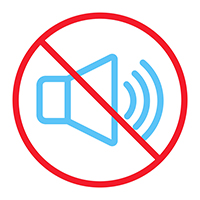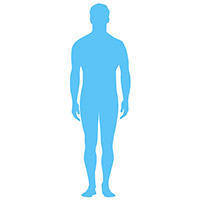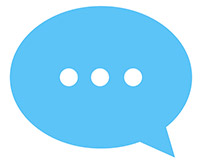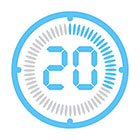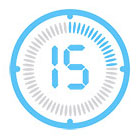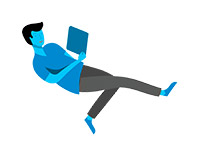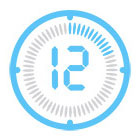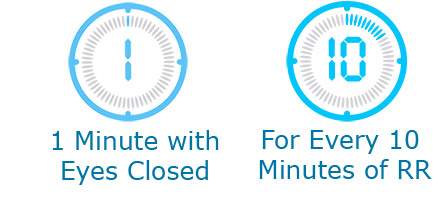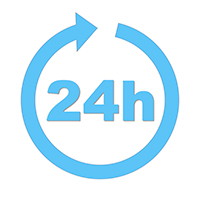OPEN PROTOCOL DETAILS
This page provides more complete details for each of the steps of the Open Protocols. The step numbers are displayed in the order of (Simple Protocol/Adapted Benson-Henry Protocol). For example, Step (4/5) means that it is step 4 for the Simple Protocol and step 5 for the Adapted Benson-Henry Protocol. Step (~/4) means that this step does not exist in the Simple Protocol and is for step 4 in the Benson-Henry Protocol.
Details about the Steps in the Open Protocols
Step (1/1) - Choose your Relaxation Agent
Purpose of the Relaxation Agent
The first step is to choose what this site refers to as a relaxation agent, or what Dr. Benson refers to as a mental device. The relaxation agent provides a place of focus to which your attention can return when you notice that your attention is on other thoughts. The relaxation response seems to work with an easy and gentle repetition of or focus on the appropriate relaxation agent and returning our attention to the agent when we notice other thoughts. By starting this gentle repetition focus, our mind shifts from a logical, externally oriented state of mind to a more relaxed, internally oriented state of mind.
If You Have a Tradition for the Relaxation Response
The choice of the relaxation agent has often been set by a spiritual or religious tradition. If a given tradition applies to you, then it usually makes sense to use a relaxation agent from your tradition.
If You Do Not Have a Tradition for the Relaxation Response
You may not be aware of any part of your tradition for bringing about the relaxation response or you may not practice any tradition. In this case, if you want to bring about the relaxation response then you should be safe using a relaxation agent of your choosing. It is important, however, to choose a relaxation agent that does not create any mental or emotional unease. Dr. Benson suggests that if you choose a word or phrase it should be in your native language, but other traditions sometimes do not have the same advice.
More Common Relaxation Agents
Some examples of words or phrases that have been successfully used to bring about the relaxation response are as follows.
- General Word or Phrase - [English]: "One", "Love", "Peace"
- Word or Phrase with Religious Connotations - [Hebrew/English]: "Shalom", [Sanskrit/English]: "Om", "Auṃ maṇi padme hūṃ" [Arabic/English]: In sha Allah
-
Short Prayer - "Hail Mary, Full of Grace", "Ave Maria", "Sh'ma Yisrael"
Note that in some religious systems it is believed to be inappropriate to constantly repeat prayers of many words (e.g., Protestant Christians utilizing the passage from Matthew 6:7-8). In those cases, it would be more appropriate to use one of the other types of relaxation agents. - Image - There appears to be less guidance for the use of images for bringing about the relaxation response. In ancient traditions, a mandala was used as visual focus for meditation. This has been continued in Jungian psychological approaches.
- Breathing - Breathe deeply and slowly using diaphragmatic or "belly breathing" and focus on the inward and outward rhythm of the breathing process.
Less Studied Relaxation Agents
The most common types of a relaxation agent for scientific studies of the relaxation response is a repetitive word, phrase. prayer, image or the rhythm of breathing. However, there are also a wide variety of other agents that may produce the relaxation response. These may actually be more commonly used in general. However, these relaxation agents have been less studied in terms of the relaxation response. On p. 96-97 of the Relaxation Revolution by Dr. Benson, the following possible agents are mentioned in relation to bringing about the relaxation response.
- Repetitive Aerobic Exercise - if it does not require great concentration or high bursts of energy
- Progressive Muscle Relaxation - See Step (~/4) below
- Playing a Musical Instrument or Singing - Memorized sequences on a musical instrument or chanting or singing
- Listening to Music - Soothing music with repetition in it, either vocal or instrumental
- Tasks that use "Mindless" Repetitive Movements - Examples include gardening, woodworking, knitting or doing needlepoint
- Natural Triggers - Examples include listening to ocean waves, floating in a calm pool, standing under a shower, sitting alone in the woods and contemplating natural sights, lying on your back and looking up at the clouds
If you choose a relaxation agent from this list then you also may need to change the steps in the Simple Protocol or Benson-Henry Protocol in an appropriate way.
Step (2/2) - Find a Quiet Place
It is best to find a quiet place free of much noise and to sit in a comfortable position. However, it is still possible to bring about the relaxation response even in in noisy settings. Bringing about the relaxation response in noisy settings has not been widely researched, however.
Step (3/3) - Close Your Eyes
Gently close your eyes and set your attention on your thoughts or your breathing. This sets the stage for bringing about the relaxation response. Your eyes should remain closed throughout the process of experiencing the relaxation response and for a few minutes afterwards.
Step (~/4) - Progressively Relax All Your Muscles
This is progressive muscle relaxation (PMR), where you tense and then relax your major muscle groups. You should begin with your toes and then move up through your head. It is suggested that you do this for one to two minutes.
Step (4/5) - Begin Focusing on Your Chosen Agent
This is where you begin bringing about the relaxation response using repetition. If your relaxation agent is a word, phrase, or prayer, then focus your attention on your relaxation agent and beginning repeating it in your mind. If the relaxation agent is your breath, then focus your attention on your breathing. If your relaxation agent is a picture, then focus on the picture in your mind. Note that some traditions of Mandala meditation may focus on the picture with eyes open.
Step (5/6) - Assume a Passive Attitude
You may notice that during the process of trying to focus on your relaxation agent that your thoughts begin to wander. When you become aware that your thoughts are wandering, then gently bring your attention back to the repetition of your relaxation agent.
Step (6/7) - Continue for 12 to 20 Minutes
Continue 20 Minutes for the Simple Protocol
The original research done on the relaxation response used people who practiced Transcendental Meditation. The Transcendental Meditation program recommended for people to meditate twice a day for 20 minutes each time. This was the protocol used in many of the original experiments on the relaxation response. These early experiments are the inspiration for the Simple Protocol. So, this is why the Simple Protocol suggests using 20 minutes for each period of bringing about the relaxation response.
Continue 12 to 15 Minutes for the Benson-Henry Protocol
Over decades of research, Dr. Benson refined the original protocols to create the Benson-Henry protocol. The time for bringing about the relaxation response through repeating the relaxation agent was reduced to 12 to 15 minutes. This allows people time to continue with Phase 2 if they want to and still finish the entire Benson-Henry protocol in 20 to 30 minutes.
Step (~/8) - Use Mental Imagery
After studying the placebo effect, Dr. Benson wanted to add some ideas from what he called "remembered wellness". In this step, you can visualize what it would be like to live the healthy life that you desire to live. In the case of addiction recovery,
Step (~/9) - Continue for 8 to 12 Minutes
In the Benson-Henry protocol, the mental imagery should continue for at least 8 to 12 minutes.
Step (7/10) - Let Your Body Adapt Before Activity
A common rule of thumb is to keep the eyes closed in the ratio of about 1 minute for every 10 minutes in which you were eliciting the relaxation response. Some people report having a headache if they do not keep their eyes closed long enough.
Step (8/11) - Practice at Least Once Daily
Scientists have shown that the benefits are stronger when the protocol is used regularly. For most scientific studies by Dr. Benson, suggestions were made to bring about the relaxation response at least once per day. It was also very common to ask people to do the protocol twice a day. The original Transcendental Meditation groups suggested that their students practice twice a day.




